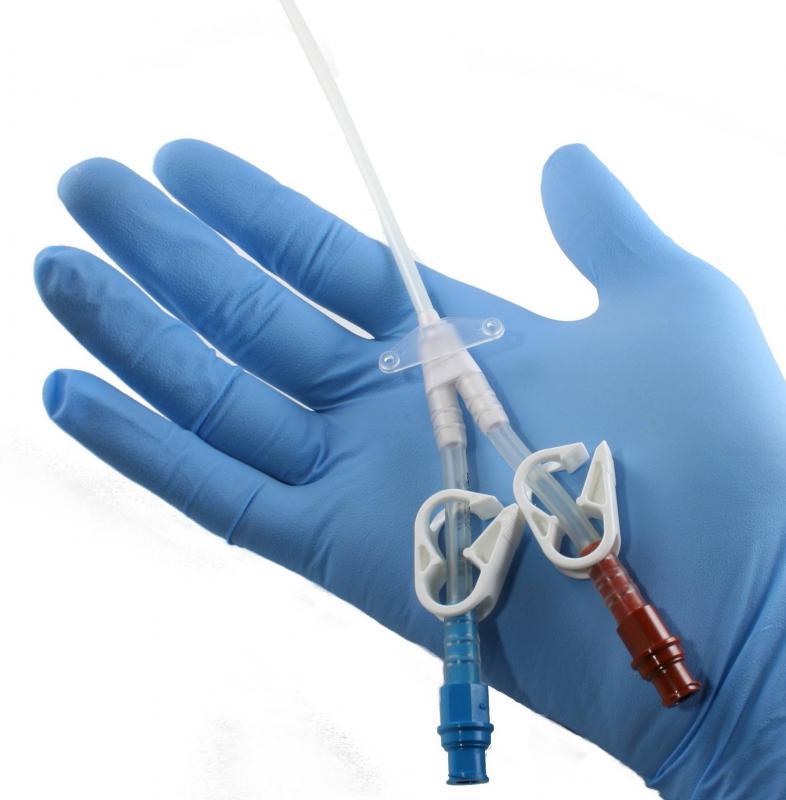At TheHealthBoard, we're committed to delivering accurate, trustworthy information. Our expert-authored content is rigorously fact-checked and sourced from credible authorities. Discover how we uphold the highest standards in providing you with reliable knowledge.
What is Bacteremia?
Bacteremia is bacterial infection of the blood, though this not the same as blood poisoning or sepsis. It can be called a precursor to sepsis, if symptoms like widespread inflammation develop too, but many times bacteremia, if observed, can be treated long before sepsis occurs. Bacteria in the blood stream may occur under many circumstances but it appears most commonly in the very young, very old, or those who are medically vulnerable, especially from impaired immune systems due to illness, recent transplant or chemotherapy. Alternately when people have things like catheters or permanent IV lines, they could be more at risk.
Early symptoms of bacteremia include chills and a fever that generally is at least 101 degrees F (38.33 degrees C). Fever can certainly rise, but in some people, especially children, this is the only symptom. Other people do have additional symptoms that include fast breathing, rapid heart rate, or symptoms of additional illnesses like pneumonia or meningitis. Diagnosis of the illness is confirmed by culturing blood from a blood test to look for bacterial growth. When this is present, bacteremia is assumed and treatment must begin immediately.

As would be suspected, the main treatment for bacteremia is antibiotics to kill the infection in the blood. Depending on illness and degree of likelihood that sepsis could develop, doctors may choose to infuse this medicine intravenously, to give shots of medicine or to give people oral antibiotics. If sepsis is likely, intravenous infusion of medicine could be the first choice. Others may not require such a severe course, but caretakers might be told to watch for symptoms of worsening condition, such as higher fever, delirium, progressive weakness, changes in skin coloration, or inability to move neck or jaw.

About 60-80% of people with blood infection respond well to treatment and make full recoveries. Mode of infection may need to be addressed. For instance, someone with a stable catheter might need that catheter to be changed more frequently or could be instructed on more sterile approaches to changes to reduce likelihood of infection. It would be unfair to say that bacteremia is usually the fault of the person affected. In many cases improper management in hospitals or long term care facilities is most indicated in blood infection.

Sometimes, despite treatment, people do progress to true sepsis, and this condition risks life since it causes inflammation in response to infection. Treatment is still antibiotics and almost always intravenously infused. Occasionally, administration of several antibiotics might be required to stop the growth of bacteria and the inflammatory response that can begin to cause organ damage. For most people with bacteremia, this secondary illness won’t occur.

People can watch for signs of bacteremia, and should do so if they have any permanent medical devices installed, are at risk due to poor immune system, have recently suffered open wounds or cuts, undergone surgery, or been hospitalized. As stated, the principal symptom of the condition is fever. Folks should not hesitate to contact doctors if high fever has occurred and they meet one of these additional risk factors.
AS FEATURED ON:
AS FEATURED ON:

















Discuss this Article
Post your comments